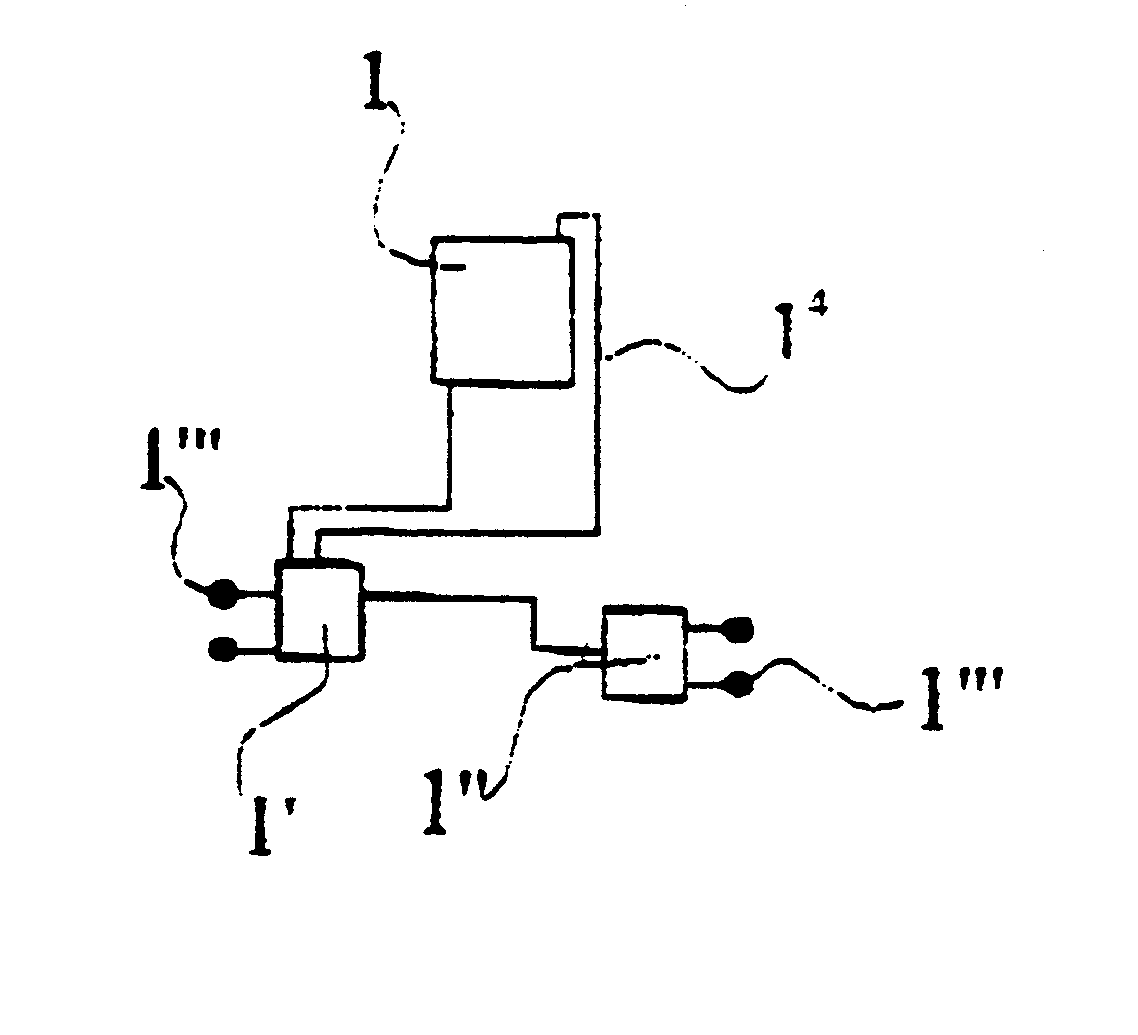Method of component manufacture
- Summary
- Abstract
- Description
- Claims
- Application Information
AI Technical Summary
Benefits of technology
Problems solved by technology
Method used
Image
Examples
Embodiment Construction
FIG. 1 thus shows a method of producing an electric, electronic optical and / or mechanical component.
The description is directed to a thermocouple 1 as an example of a component produced in accordance with the method. Reference is made to Swedish Patent Application 98 00462-5 for a more detailed description of such a thermocouple.
As shown in FIG. 1, a substrate 2 for the thermocouple 1 has a three dimensional structure or configuration 3 and is adapted for further treatment or processing so as to form the end produce, i.e. the thermocouple.
As shown in FIG. 1, the three-dimensional structure 3 for the thermocouple is produced on a delimited surface region, and that electric conductor paths and / or further electric and / or electronic components can be produced on this delimited surface region in mutually the same way.
These further components may comprise an amplifier 1', a voltage unit 1", correction pads, connection terminals 1'", or an electric conductor path 1.sup.4, etc., as shown in...
PUM
| Property | Measurement | Unit |
|---|---|---|
| Angle | aaaaa | aaaaa |
| Pressure | aaaaa | aaaaa |
| Electrical conductivity | aaaaa | aaaaa |
Abstract
Description
Claims
Application Information
 Login to View More
Login to View More - R&D
- Intellectual Property
- Life Sciences
- Materials
- Tech Scout
- Unparalleled Data Quality
- Higher Quality Content
- 60% Fewer Hallucinations
Browse by: Latest US Patents, China's latest patents, Technical Efficacy Thesaurus, Application Domain, Technology Topic, Popular Technical Reports.
© 2025 PatSnap. All rights reserved.Legal|Privacy policy|Modern Slavery Act Transparency Statement|Sitemap|About US| Contact US: help@patsnap.com



